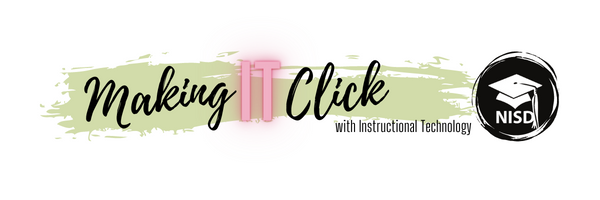In Northwest ISD, our youngest learners develop life longs skills of selecting, reflecting, and sharing their work in a digital format called ePortfolios. The standard program our district uses for primary ePortfolios is Seesaw. In partnership with district ELAR Coaches and Instructional Technologists they were able to offer kindergarten readers the opportunity to utilize Seesaw to reflect and set goals for their reading superpowers.
Casey Dibenedetto, Kindergarten teacher at Roanoke Elementary, is definitely a Super Teacher who is out of this world! Casey looked over the activities provided by the coaches and added audio instructions so her kids could listen to them independently. Before students began the activity she reviewed the Super Reader Powers and gave students time to think about a power they used frequently with ease and a power they often forgot to use - basically a celebration and a goal.
Students leveraged the creative tools in Seesaw to reflect on their learning and set goals. Specifically, they were thinking about the “Reading Super Powers” they had learned in their most recent reading unit. As a Kindergarten Super Teacher she knows students can talk about their learning much easier than they can write about it. By using this Seesaw activity her students were able to easily share their strength and their goal with their teacher and their families.
Casey believes “Seesaw is absolutely amazing! I love that there are so many tools available for students to utilize as they communicate about their learning. They can draw pictures and add text and drawings to annotate work or a provided image. It is also easy for students to collaborate and complete work together. The aspect of Seesaw that most helps to augment my students’ classroom experience is that they can record their voice and I can listen to their responses. The multi-page activities have also been a game changer in the way I am able to use Seesaw with my students. Communication with families is another key feature of Seesaw. Parents love seeing what their kids are doing at school. I also use it to share newsletters, links, announcements, and other information with families.”
In Mrs. Di’s classroom, her students use the NISD Portal to access Seesaw and Google Classroom often. She provides visual instructions to help her students remember the steps and follow them independently. Students in Mrs. Di’s classroom use Seesaw almost every week to share their learning. Sometimes this is an open ended Journal prompt where students share a piece of work and talk about it and sometimes it is a preloaded Activity that they access and complete. Students also use Seesaw to practice reading aloud and sharing their writing. Her students really enjoyed this opportunity to reflect as Super Readers in Seesaw. They loved getting to color themselves as a Super Reader, and they loved sharing their strength and their goal.
Please check out Casey’s adapted version of the activity - verbal instructions, wording changed slightly to sound like her.
Below are student samples of the completed activity as well as Seesaw activities for future units of study.




No comments:
Post a Comment
Note: Only a member of this blog may post a comment.